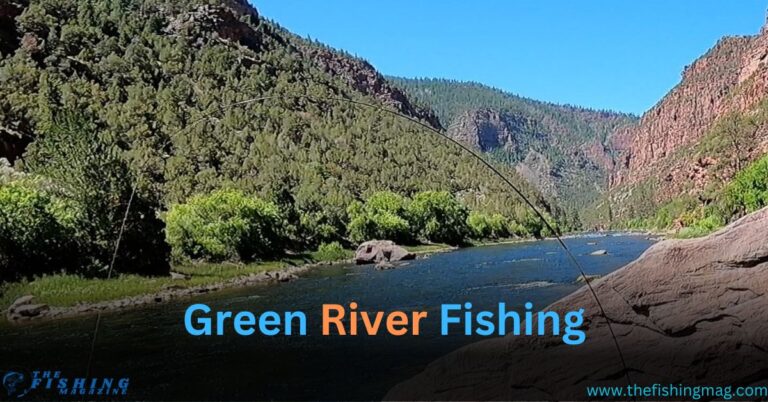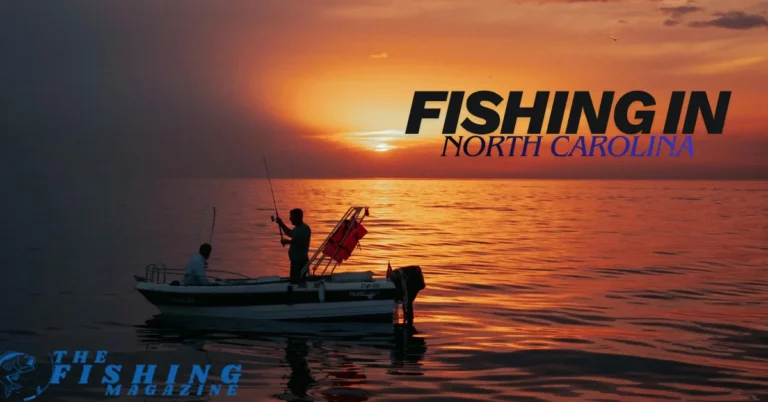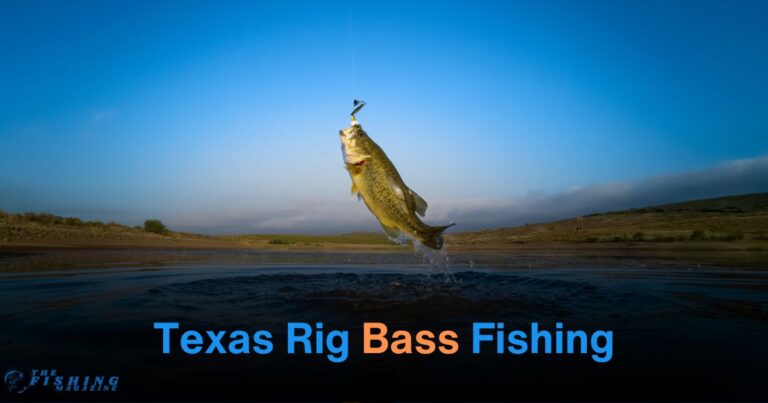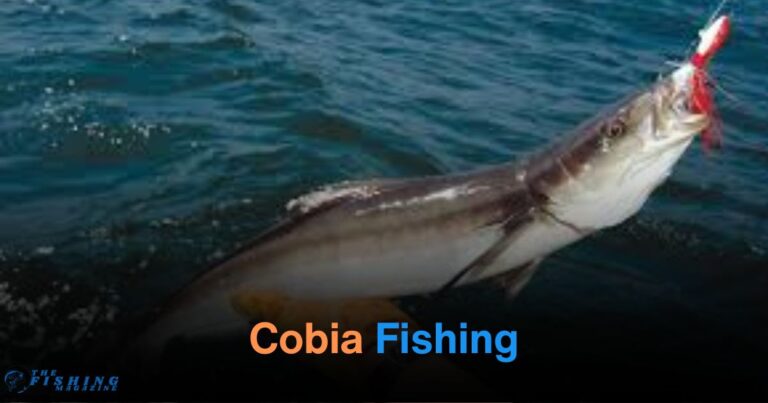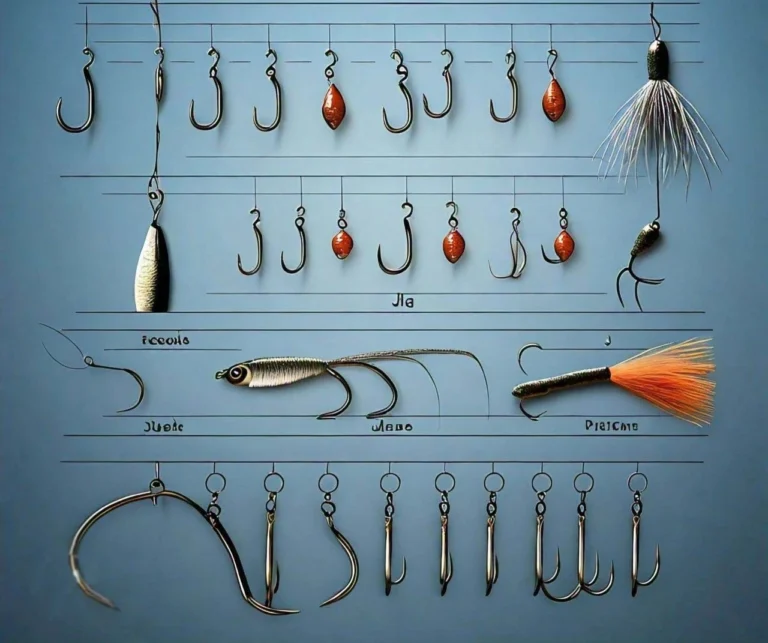What a Crankbait Is and Master Tips & Tricks for Successful Fishing. Learn Everything You Need to Know About Crankbait Fishing Techniques in Our Comprehensive Guide.”
Fishing, an age-old passion, not only provides entertainment but also fulfills a fundamental human need. The art of catching fish has always been a craft honed by dedicated anglers, securing their livelihood through the treasures of the water.”
In the contemporary era, a revolutionary tool known as ‘crankbait’ has emerged for anglers. Using crankbait has led to remarkable success in fishing, enabling even novices to transform their fishing endeavors into triumphs. This innovative tool has become a game-changer, adding a new dimension to the world of fishing.
Discover the ultimate secrets of successful crankbait bass fishing with our comprehensive guide. Explore expert tips, tricks, and techniques for mastering this exciting angling method. Dive into the world of crankbait fishing with in-depth insights, and learn how to enhance your bass-catching prowess. Your go-to resource for a rewarding fishing experience awaits!
Crankbaits
Crankbait is like a magical tool designed with the allure of a fish. When you submerge crankbait in water, it possesses the ability to dive, mimicking the movement of a real fish. When you reel it in, it moves in the water just like a fish, captivating larger fish into thinking it’s prey. Thanks to crankbait, anglers can successfully hook significant catches. It’s crafted from materials like metal, plastic, or wood.
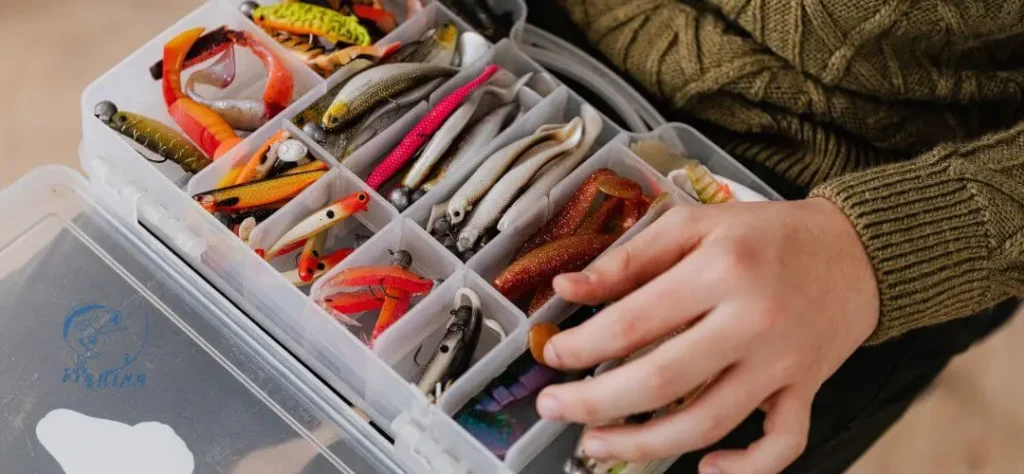
Exploring Durability and Attraction
Crankbaits come in various materials, each contributing to their performance in different ways.
| Metallic Crankbaits | Crafted from sturdy metal, these crankbaits are ideal for saltwater fishing due to their corrosion-resistant properties. |
| Plastic Crankbaits | Commonly used, plastic crankbaits offer versatility with a wide range of designs and colors. Their flexibility makes them effective in attracting different types of fish. |
| Wooden Crankbaits | Crafted from wood, these crankbaits showcase unique swimming actions in the water, adding an extra element to their appeal. |
Choosing the right material plays a crucial role in optimizing the effectiveness of crankbaits, allowing anglers to tailor their selection based on specific fishing conditions and target species.
Successful Guide for Crankbait Fishing
Crankbait is like a magic tool for catching fish. It works wonders in helping anglers, playing a big and important role in fishing. Crankbait holds a significant and crucial role in the world of fishing for enthusiasts.
Materials
Crankbaits come in different materials like metal, plastic, and wood. Each material has its unique features, with metal being sturdy, plastic providing diverse colors and designs, and wood offering a natural, lifelike action.
Diving Action and Lip Design
The special diving action and front lip of a crankbait give it a lifelike swimming motion. This action fools fish into thinking it’s real prey, enticing them to strike.
Fish Preferences
Understanding what fish prefer in different seasons and environments is key to successful crankbait fishing. Bright colors work well in clear water, while dull colors are effective in murky conditions.
Tackle Setups and Retrieve Techniques
To master crankbait fishing, choosing the right tackle setup and using various retrieve techniques is essential. Techniques like steady retrieve, stop-and-go, and twitching mimic the movement of injured or fleeing prey.
Crankbait A Versatile Tool for Various Fish Species
Crankbaits are versatile fishing lures known for their effectiveness in catching a variety of fish species. Their adaptability makes them a go-to tool for anglers seeking success in diverse fishing scenarios.
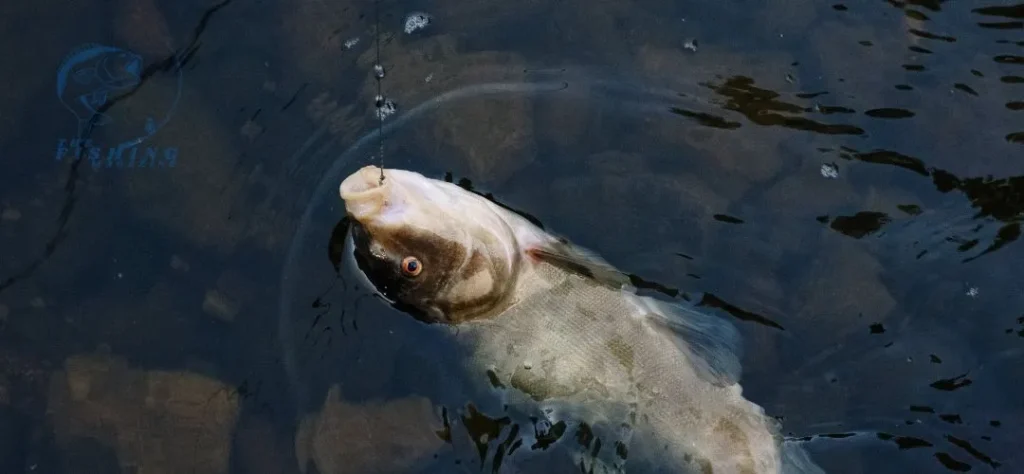
Bass Fishing
In bass fishing lures, crankbaits shine as reliable lures for both largemouth and smallmouth bass. Their diverse designs and sizes mimic the prey bass instinctively pursue, making them a staple in bass angler’s tackle boxes.
Walleye Attraction
The versatile nature and diving actions of crankbaits make them effective in attracting walleye. Anglers often rely on crankbaits to entice these elusive predators and enhance their walleye fishing experience.
Pike and Musky Allure
Crankbaits are favorites among anglers targeting northern pike and muskellunge due to their aggressive nature. Specially designed crankbaits capitalize on these predatory instincts, making them potent tools in pike and musky fishing.
Trout Temptation
Trout fishing enthusiasts appreciate the flashy colors and realistic designs of crankbaits. Whether targeting rainbow trout, brown trout, or brook trout, crankbaits prove to be effective in enticing these elusive and prized catches.
Panfish Inclusion
While not the primary target, crankbaits can also be used to catch panfish like crappie and bluegill. Adjusting the size and retrieve speed is essential to cater to the preferences of these smaller species.
Versatility Across Water Bodies
Crankbaits are highly versatile, making them suitable for different types of water bodies and fishing conditions. Anglers can explore and target a wide variety of fish, adding excitement and diversity to their fishing adventures.
Anatomy of a Crankbait
Dive into the intricacies of crankbaits and unravel the hidden features that make them a game-changer in the fishing world.
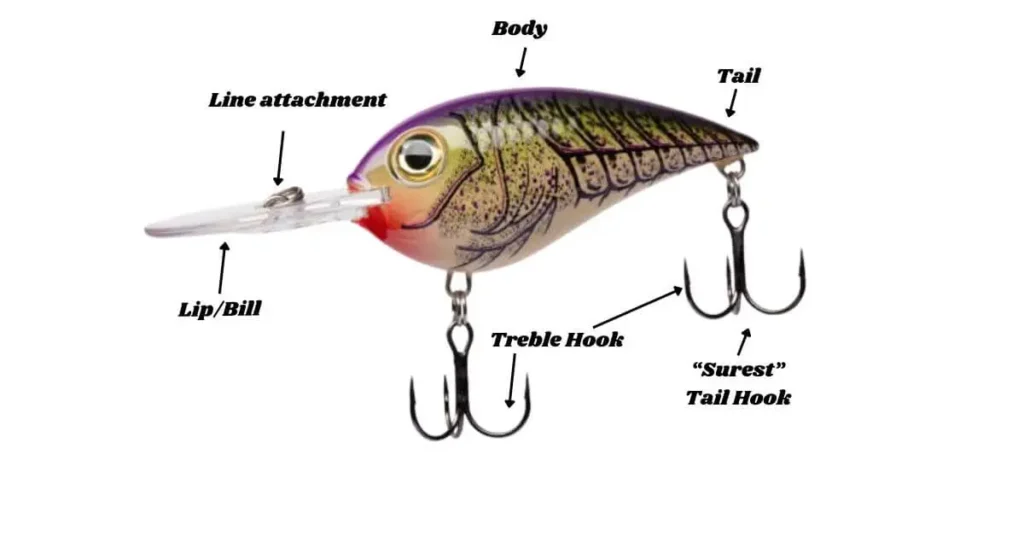
Body Design
The body design of a crankbait plays a pivotal role in its success. From sleek, metallic finishes to natural, wooden textures, each design is crafted to mimic the movement of real prey, enticing fish to strike.
Diving Depth
Understanding the diving depth of a crankbait is crucial. The lip or bill of the lure determines how deep it dives, making it adaptable to various water conditions and ensuring you reach the optimal depth for your target fish.
Color Palette
The color palette of a crankbait is not just for aesthetics; it’s a strategic choice. Bright colors for clear waters and subtle hues for murky conditions, each color serves a purpose in attracting fish based on their visual preferences.
Hooks and Hardware
The hooks and hardware of a crankbait contribute to its overall effectiveness. Sharp, sturdy hooks and durable components ensure that once a fish strikes, it stays hooked, minimizing the chances of losing your prized catch.
Action and Movement
The lifelike action and movement of a crankbait are its secret weapons. Whether mimicking injured prey or executing an enticing dance, these lures create a scenario that triggers the predatory instincts of fish, compelling them to bite.
Retrieve Techniques
Mastering various retrieve techniques is key to unlocking the full potential of a crankbait. Experiment with steady retrieves, stop-and-go patterns, or sudden twitches to mimic different types of prey and keep the fish guessing.
Seasonal Adaptability
The adaptability of crankbaits to different seasons is noteworthy. Understanding how fish behavior changes with the seasons allows you to adjust your crankbait strategy, increasing your chances of success.
Embark on a journey to dissect the anatomy of a crankbait, where every component plays a vital role in the art and science of successful fishing.
Types of Crankbaits
Dive into the fascinating world of crankbaits, where versatility meets innovation, offering anglers an array of options tailored to specific fishing scenarios.
| Shallow Runners | Perfect for shallower waters, diving up to 6 feet. Ideal for exploring surface structures and cover. |
| Medium Divers | Versatile lures suitable for depths ranging from 6 to 12 feet, adapting well to various fishing conditions. |
| Deep Divers | Specialized for deeper waters, diving beyond 12 feet. Great for targeting fish in submerged structures. |
| Lipless Crankbaits | No diving lip, offering an erratic, vibrating action. Effective in vegetation or when a fast retrieve is needed. |
| Squarebill Crankbaits | Square-shaped bill causes deflection off cover. Excellent for fishing around rocks, logs, and timber. |
| Floating Crankbaits | Designed to float at rest and dive during retrieval. Mimics injured or dying prey. |
| Jointed Crankbaits | Multiple jointed sections create a realistic swimming action, imitating the movement of injured baitfish. |
| Flat-Sided Crankbaits | Flat or narrow profile for a tight wobble. Effective in colder water or when fish are less active. |
| Round-Bodied Crankbaits | Rounded, bulbous shape for a wide wobbling action. Effective in warmer water conditions. |
Explore the world of crankbaits with these diverse types, each designed to meet specific fishing challenges and maximize your chances of a successful day on the water.
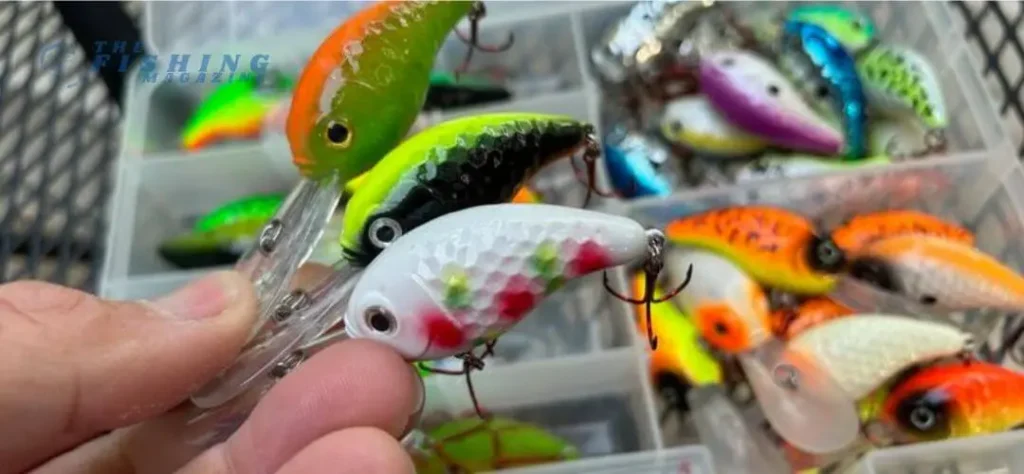
Best Times to Use Crankbaits Simplified
Discover the prime moments for crankbait success!
Unveil the strategic art of crankbait deployment as we delve into the optimal scenarios for maximizing the effectiveness of these versatile lures.
- Warmer Water Seasons
Crankbaits truly shine in warmer water conditions, particularly during spring and summer. As temperatures rise, fish become more active, and crankbaits, with their vibrant actions, prove irresistible to hungry predators.
- Post-Spawn Period
Post-spawn, when fish are recovering and seeking food, is an opportune time for crankbait usage. Mimicking the appearance of injured prey, crankbaits capitalize on the feeding instincts of recuperating fish.
- Shallow Water Exploits
When targeting shallower areas, especially near cover or structures, crankbaits excel. Shallow divers or squarebill crankbaits are perfect choices for enticing fish lurking in these zones.
- Aggressive Fish Behavior
Crankbaits are ideal when fish exhibit aggressive behavior, such as during a feeding frenzy or when protecting their territory. The alluring action and noise generated by crankbaits trigger the predatory instincts of fish.
- Fall Feeding Frenzy
As temperatures drop in the fall, fish engage in a feeding frenzy to bulk up for the upcoming winter. This is an excellent time to employ lipless crankbaits or squarebills, imitating fleeing baitfish.
- Clear Water Conditions
In clear water, where visibility is high, the realistic designs and vibrant colors of crankbaits make them stand out. Opt for these lures in clear conditions to attract the attention of discerning fish.
- Retrieval Speed Variation
Experimenting with retrieval speeds can make crankbaits effective in various situations. Faster retrieves mimic fleeing prey, while slower ones resemble injured or struggling fish, offering versatility in approach.
- Targeting Structure and Cover
Crankbaits are adept at enticing fish residing near structures like rocks, logs, or submerged vegetation. Their ability to deflect off cover often triggers reaction strikes from fish hiding in these areas.
By understanding the nuanced timing of when to use crankbaits, anglers can elevate their fishing game, increasing the likelihood of memorable catches.
Choosing the Perfect Color Crankbait
Embark on a color-centric journey to unravel the secrets of selecting the ideal crankbait hue, ensuring your tackle box boasts the perfect palette for any fishing situation.
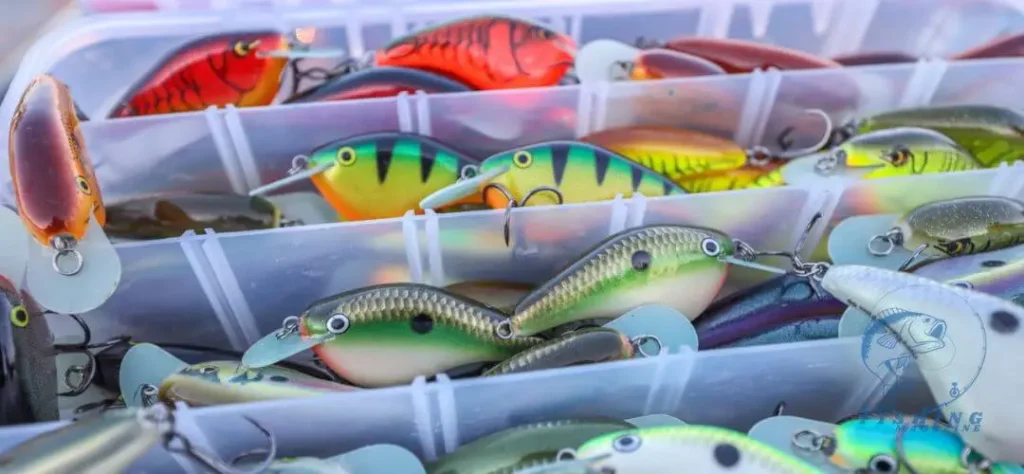
Clear Water Brilliance
In clear water conditions, opt for natural and translucent colors such as silver, shad, or bluegill patterns. These hues mimic the authentic appearance of prey and entice fish in high-visibility environments.Murky Water Mastery:
When fishing in murky or stained waters, go for high-contrast colors like chartreuse, orange, or bright red. These vibrant shades create a bold silhouette, making it easier for fish to spot the crankbait in less clear conditions.
Natural Imitation
Matching the hatch is key. Choose crankbait colors that closely resemble the prevalent forage in the area. If local baitfish exhibit specific colors, selecting a crankbait that mimics their appearance increases your chances of success.
Experiment with Shading
Varying shades of the same color can make a difference. Try light and dark variations to gauge fish preferences on any given day. Fish can exhibit nuanced color preferences, and experimentation can lead to discovering the most effective shade.
Seasonal Sensibility
Adjust your crankbait color based on the season. In spring and early summer, go for brighter hues, while more subdued colors like browns and greens often excel during the fall. Adapting to seasonal changes enhances the lure’s appeal.
Cloud Cover Consideration
On overcast days, when light conditions are subdued, opt for brighter colors to enhance visibility. Conversely, on sunny days, more natural and reflective hues can prove effective under clearer skies.
The Impact of Water Clarity
Consider the overall water clarity in your chosen fishing spot. Crankbaits that complement the prevailing visibility conditions—whether clear, stained, or muddy—will stand out more effectively.
Flash Factor
Incorporate crankbaits with metallic finishes or reflective elements for added flash. This can be particularly enticing to fish in situations where they are actively targeting shiny prey.
Unlock the potential of your crankbait selection by mastering the art of color choice. With these insights, you’ll be equipped to make informed decisions, giving you a competitive edge in the diverse and colorful world of fishing.
What is a Crankbait Size, Suitable Depth, and Best Used
A crankbait’s size, often measured in inches, determines its depth range and target species. Smaller sizes, like 1.5 to 2 inches, are suitable for shallower depths (2-6 feet) and excel at enticing crappie and panfish.
| Crankbait Size | Suitable Depth | Best Used For |
|---|---|---|
| 1.5 inches | 2-4 feet | Crappie and Panfish |
| 2 inches | 4-6 feet | Shallow Bass and Trout |
| 2.5 inches | 6-8 feet | Largemouth Bass and Walleye |
| 3 inches | 8-10 feet | Smallmouth Bass and Pike |
| 3.5 inches | 10-12 feet | Medium Diving Range |
| 4 inches | 12-15 feet | Deep Diving, Open Water |
| 4.5 inches | 15+ feet | Targeting Deep Structures |
| 5 inches | 15+ feet | Large Predatory Species |
Medium sizes (2.5 to 3.5 inches) cover a broader range (6-12 feet) and prove effective for largemouth bass, walleye, and pike. Larger crankbaits, around 4.5 to 5 inches, delve into deeper waters (15+ feet), targeting structures and large predatory species. This diversity in sizes caters to various fishing scenarios, offering anglers the flexibility to match the hatch and entice their preferred catch.
Crankbait Tactics for Largemouth Bass with Top Picks
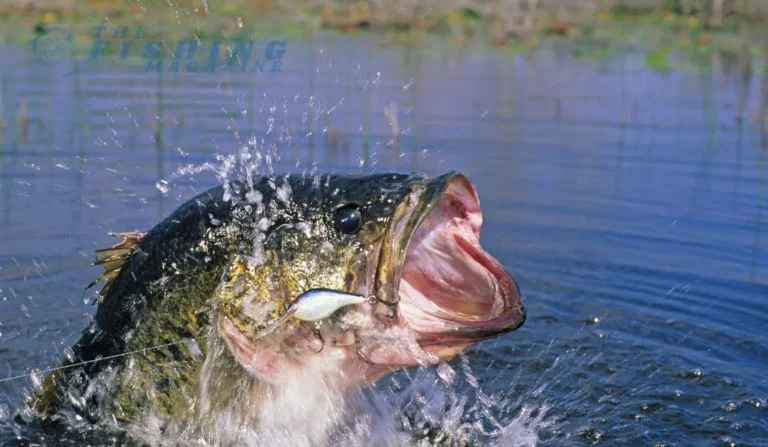
Embark on a journey to master the art of crankbait fishing tailored specifically for largemouth bass. Explore the nuances of technique and discover the best crankbaits to elevate your bass angling game.
- Selecting the Right Crankbait
Begin by choosing the best crankbait for largemouth bass. Opt for models with a moderate diving depth, such as medium divers or square bill crankbaits, to cover various water depths where largemouth bass are commonly found.
- Target Shallow Structures
Largemouth bass often seek refuge near shallow structures like docks, vegetation, and submerged timber. Utilize shallow-diving crankbaits or squarebills to navigate these areas effectively, triggering strikes from bass hiding in cover.
- Vary Your Retrieval Speed:
Experiment with retrieval speeds to find what entices largemouth bass on any given day. A steady retrieve mimics healthy prey, while pauses, jerks, or speed changes can trigger reaction strikes from bass in different moods.
- Mimic Erratic Movements
Imitate the erratic movements of injured or fleeing prey by incorporating sudden twitches or erratic jerks during your retrieve. This imitates vulnerability, often enticing a predatory response from largemouth bass.
- Use Natural Color Patterns
Select crankbaits in natural color patterns that mimic the prevalent forage in the bass’s environment. Crawfish imitations, shad patterns, and bluegill hues are popular choices that closely resemble the bass’s natural prey.
- Fish During Active Periods
Focus your crankbait efforts during the active periods of largemouth bass, such as dawn, dusk, or overcast days. Bass are more likely to strike aggressively during these times, increasing your chances of a successful catch.
- Target Transition Zones
Identify transition zones where different types of underwater structures meet. These areas, like drop-offs or points, are prime locations for largemouth bass ambushes. Crankbaits excel in covering these zones efficiently.
- Consider Water Temperature
Pay attention to water temperature, as it influences bass behavior. In warmer conditions, largemouth bass are more active, making it an ideal time to employ crankbaits to cover water and locate feeding fish.
With these tailored tactics and top-notch crankbaits, you’re poised for success in targeting largemouth bass. Navigate the waters with confidence, and let the perfect blend of technique and lure selection elevate your bass fishing endeavors.
Mastering Crankbait Lures for Bass Fishing
Unlock the secrets to bass fishing excellence as we delve into the art of utilizing crankbait lures. Learn the nuances of technique and discover the strategies that set you apart in the competitive world of bass angling.
Crankbait Selection:
Begin your bass fishing journey by selecting the right crankbait. Tailor your choice based on the water depth, structure, and the specific behavior of the bass you’re targeting. Consider medium divers or squarebill crankbaits for their versatility.
Understand Bass Behavior:
Aim to understand the behavior of bass in different seasons. During warmer months, bass are more active, making it an opportune time for crankbait usage. Adjust your approach based on their feeding patterns and preferred depths.
Match the Hatch:
Imitate the prevalent forage in the bass’s habitat by selecting crankbaits that match the local baitfish. Mimicry is key, and choosing colors and patterns that resemble the natural prey increases the chances of attracting bites.
Vary Retrieval Speeds:
Experiment with retrieval speeds to find the sweet spot that entices bass. A steady retrieve mimics healthy prey, while varying speeds, pauses, or sudden jerks can trigger reaction strikes from bass in different moods.
Target Shallow Structures:
Utilize crankbaits in and around shallow structures where bass commonly seek cover. Rocks, vegetation, and submerged timber are prime locations. Shallow-diving crankbaits or squarebills navigate these areas effectively.
Explore Transition Zones:
Identify transition zones where different underwater structures meet, such as drop-offs or points. Crankbaits are excellent tools for covering these zones efficiently, as bass often lurk in these areas waiting to ambush prey.
Experiment with Colors:
Don’t shy away from experimenting with crankbait colors. Bright and contrasting colors work well in murky water, while more natural tones are effective in clear conditions. Adjust your color choices based on water clarity and light conditions.
Time Your Fishing Sessions:
Strategically time your fishing sessions for optimal success. Early mornings, late evenings, or overcast days are often the most productive. Bass are more likely to strike aggressively during these low-light or cooler periods.
With these techniques, you’re equipped to elevate your bass fishing game using crankbait lures. Let a thoughtful blend of technique, lure selection, and understanding of bass behavior guide you to success on the water.
Crankbait vs Jerkbait – Differences, Applications, and Shape Secrets
Embark on a comprehensive journey as we unravel the distinctions between crankbaits and jerkbaits. Gain insights into when and how to deploy these lures effectively, including the intriguing differences in their shapes.
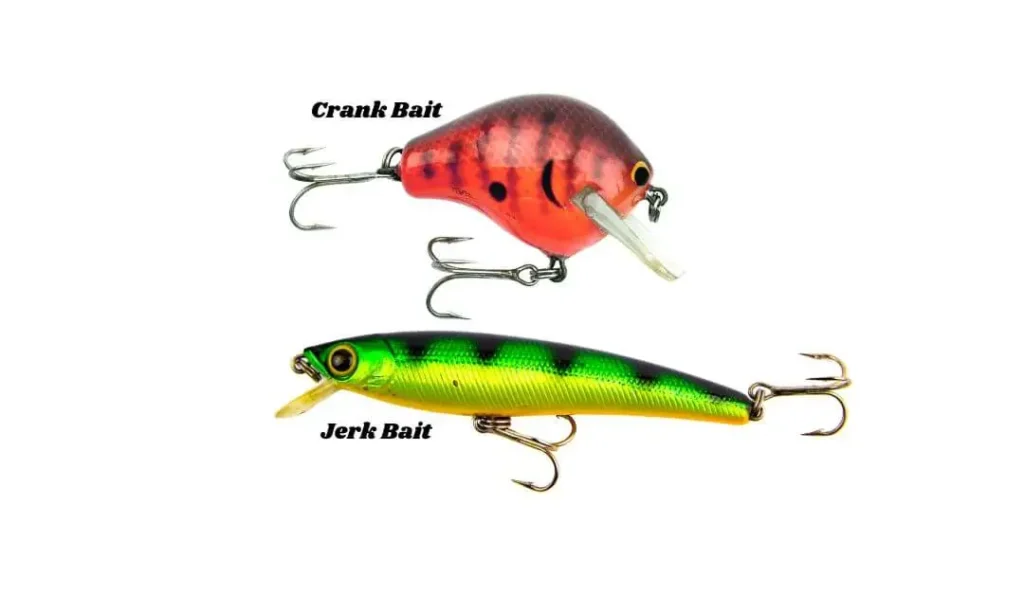
Crankbait Unveiled
Crankbaits are characterized by their distinct, lip-like projection that imparts a diving action. Ideal for covering different water depths, these lures boast a rounded, compact shape, often equipped with treble hooks. Their enticing wobble mimics the movement of prey, triggering predatory responses from fish.
Jerkbait Dissected
Jerkbaits, in contrast, showcase a slender, minnow-like profile. These lures lack the diving lip of crankbaits and rely on the angler’s twitching or jerking motions to impart action. Often designed with a suspending or floating quality, jerkbaits excel in imitating injured baitfish, making them irresistible to predatory species.
When to Choose Crankbaits
Opt for crankbaits when you aim to cover expansive areas quickly or when fish are positioned at specific depths. The diving action and versatility of crankbaits make them effective in various water conditions, especially when targeting actively feeding fish.
When to Choose Jerkbaits
Select jerkbaits when a finesse approach is required. Their subtle, darting action during pauses mimics vulnerable prey, enticing cautious or inactive fish. Jerkbaits shine in colder water temperatures and when fish are less aggressive, requiring a more precise presentation.
Shape Matters
The rounded and compact shape of crankbaits facilitates their diving action, allowing them to reach different depths efficiently. In contrast, the elongated and slender shape of jerkbaits serves to mimic the natural profile of injured or dying baitfish, appealing to the predatory instincts of fish.
Adjusting to Conditions
Consider the prevailing conditions when choosing between crankbaits and jerkbaits. Murky water or aggressive fish may favor the bold action of a crankbait, while clearer waters or finicky fish might respond more favorably to the subtlety of a jerkbait.
Experimentation is Key
Both crankbaits and jerkbaits offer room for experimentation. Vary your retrieve speeds, pauses, and twitches to gauge fish response. Understanding the preferences of your target species in different scenarios enhances your effectiveness with both lure types.
In summary, the choice between crankbaits and jerkbaits hinges on the desired action, fish behavior, and prevailing conditions. Armed with this knowledge, you’re equipped to make informed decisions, enhancing your angling prowess in diverse fishing situations.
Essential Crankbait Fishing Tips for Success
Embark on a journey to elevate your crankbait fishing game with these invaluable tips. Discover the nuances that set you apart, ensuring a rewarding and successful experience on the water.
Understand Diving Depths
Grasp the diving depths of your crankbait. Different models are designed to reach specific depths, so choose accordingly based on the water depth and the target depth of the fish you’re pursuing.
2. Experiment with Retrieve Speeds
Vary your retrieve speeds to determine what triggers strikes. Experiment with both slow and fast retrieves, and pay attention to how the fish respond. Adjusting your speed can make a significant difference in enticing bites.
Use Natural Color Patterns
Opt for crankbaits in natural color patterns that imitate the prevalent forage in your fishing area. Matching the hatch increases the likelihood of attracting fish by presenting a familiar and enticing appearance.
Target Structures and Cover
Focus on fishing around structures and cover where bass and other predatory fish often hide. Crankbaits are excellent for navigating through these areas, triggering reaction strikes from fish lurking in ambush.
Adjust According to Seasons
Adapt your crankbait strategy based on the seasons. Bright and vibrant colors are often effective in spring and summer, while more subdued hues may be preferred in the fall. Tailoring your approach to seasonal changes increases your chances of success.
Fine-Tune Your Hooks
Ensure your crankbaits are equipped with sharp and sturdy hooks. Fish often strike crankbaits aggressively, and having reliable hooks increases your chances of hooking and landing your catch.
Explore Different Types of Crankbaits
Experiment with various types of crankbaits, including shallow divers, medium divers, and lipless crankbaits. Understanding the strengths and applications of each type broadens your versatility on the water.
Pay Attention to Water Temperature
Consider the water temperature and adjust your tactics accordingly. In warmer water, fish tend to be more active, making it an ideal time for crankbait fishing. Cooler water may require a slower presentation to entice bites.
With these expert tips, you’re poised to maximize the potential of crankbait fishing. Develop your skills, adapt to changing conditions, and let these insights guide you to a more fruitful and enjoyable fishing experience.
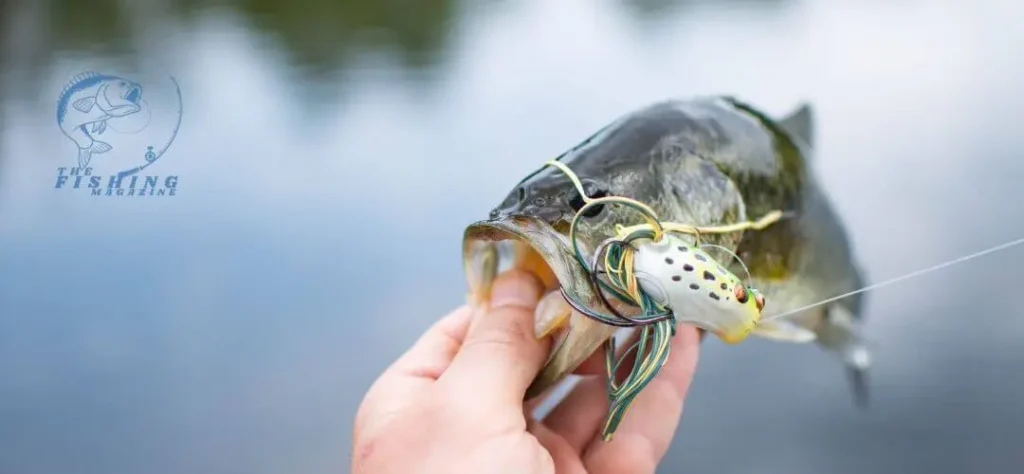
Conclusion
In the vast realm of angling, crankbaits emerge as dynamic tools, offering versatility that resonates with both seasoned anglers and those just dipping their toes into the world of fishing. From mimicking prey to adapting to changing conditions, crankbaits prove to be more than lures they are strategic companions on your fishing journey.
As you navigate the waters armed with these insights, the thrill of each cast and the anticipation of every strike add an extra layer of excitement to your angling adventures. Whether you’re a novice eager to learn or a seasoned pro seeking new perspectives, the charm of crankbait fishing lies not just in the catch but in the journey itself.
So, cast away, explore the depths, and let the rhythmic dance of your crankbait connect you to the aquatic world beneath. Happy fishing!
Frequently Ask Questions
What is the purpose of a crankbait?
The purpose of a crankbait is to deceive and catch fish. It is a special type of bait designed to go underwater and attract fish. Its design gives the impression of a live fish swimming in the water when it moves. The main goal is to assist anglers in catching fish.
What is the difference between a jerkbait and a crankbait?
The difference between Jerkbait and Crankbait lies in their design and usage. Both are crafted for catching fish, but they differ slightly in their movements and applications. Jerkbaits are employed with a slow and jerking motion, mimicking an injured fish.
On the other hand, Crankbaits are designed for swift movement in the water. Jerkbaits and Crankbaits each have their distinct methods to attract fish.
When should I use a crankbait?
A crankbait is most effective when fishing in deeper water or covering a large area. It’s ideal for exploring different depths and enticing fish that are actively feeding. Use a crankbait during warmer seasons, such as spring and summer, when fish are more active.
Additionally, it’s beneficial in clear water conditions, where the realistic design and vibrant colors can attract fish from a distance. Experiment with crankbaits when you want to cover water quickly and trigger strikes from predatory fish.”
What is another name for a crankbait?
Another name for a crankbait is a ‘plug.’ Both terms are often used interchangeably in the fishing world to refer to lures with a similar design and diving action.”Certainly! Besides “crankbait” and “plug,” some anglers might refer to similar lures with different names based on regional preferences or fishing styles. Here are a few additional terms
- Minnowbait
- Diving Lure
- Hard Bait
- wobbler
- shallow and deep-diver.
What fish is crankbait used for?
Crankbaits are versatile lures used for a variety of fish species. They are effective for catching predatory fish such as bass, walleye, pike, and trout. Anglers often use crankbaits in freshwater environments, especially when targeting gamefish that are actively feeding.
The lifelike swimming action and diving capability of crankbaits make them a go-to choice for enticing strikes from a range of fish in different water conditions.”
How to choose the right color for crankbaits?
Choose natural colors like shad, crawfish, or bluegill for clear water and bright, high-contrast colors like chartreuse or orange for murky water.

